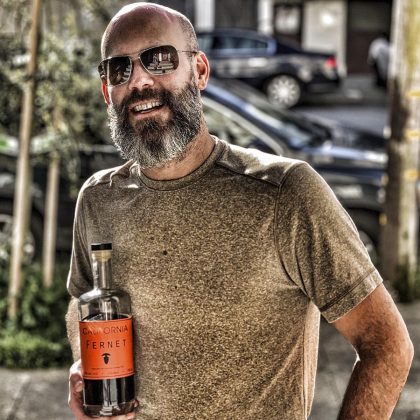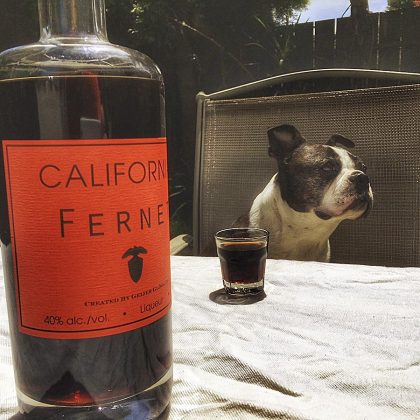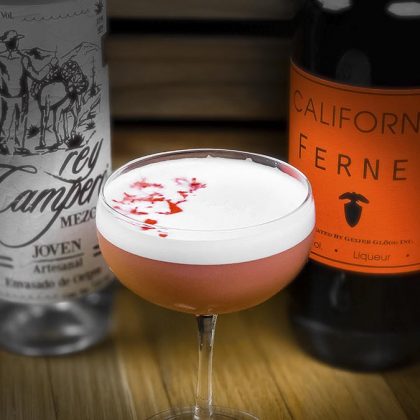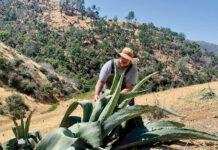Flash back a quick decade and fernet was among the most niche of all drinks, passionately beloved by a tiny, dedicated contingent largely consisting of bartenders and only the most dedicated imbibers. Since then, as all things amaro have taken off, fernet has continued to find its footing as well, leading to a broader appreciation of the category as a whole — rather than solo brands — along with myriad American-made fernets joining the fray.
Yes, there’s more to fernet than Fernet-Branca, despite the broad Xeroxification of the term. All the more reason to dive deep into the category and examine what makes a fernet, and who’s doing the job across the US right now.
What Is Fernet?
Fernet is a type of amaro, the sweeping category of bitter, herbal Italian liqueurs (amaro is the Italian word for bitter). This much we know. But beyond that, there’s no actual strict definition of what a fernet is or isn’t. Instead, there’s more of a “you know it when you see it,” or in this case, “you know it when you taste it” standard.
Poll half a dozen producers and you’ll get half a dozen answers. All of them will circle around similar core, essential truths but none will end up offering precisely the same specifications.
“Amari to me means anything that has the chemical compound amaro gentin, and gentian root,” says Todd Leopold of Leopold Bros. The Denver distillery released the first commercially available American fernet in 2012. “To me, fernet means relatively high alcohol, low-to-no sugar and low-to-medium bitterness. But legally speaking there are no American definitions.”
Martin Geijer (pronounced “yay-er”) of California’s Geijer Spirits largely agrees but seeks a more substantially bitter side. “If my back were against the wall and I needed to give a distinction between [fernet and amaro], I would say that a fernet generally has less sugar, more bitterness, and generally has higher proof than an amaro,” he says.
Meanwhile, Seth O’Malley, the head distiller at Townshend’s Distillery in Portland, Oregon, agrees that fernet falls into the drier and more spirituous side of the amaro equation but looks for specific ingredients as fundamental fernet indicators. “We also find a similar and notable eclectic botanical profile in most fernets — black aloe, saffron and myrrh, to name a few,” he says.
“While I love how fernet is not rigidly defined, the inclusion of strong mint and saffron are two major factors for me,” says Brenton Engel, founder of Letherbee Distillers in Chicago, calling out a few ingredients of his own.
The American Approach
All this to say that, while you have to pass the presumptive smell test, as it were, a lack of formal categorization allows for some maneuverability. Most American producers are looking to make a fernet that overall rings true to its traditional standards and origins, with subtle tweaks along the lines of personal flavor profile preferences, the usage of locally available ingredients or adaptability for cocktails.
“With American fernets, they’re all totally different even though for the most part they all apply the same six or seven base botanicals,” says Dan Oskey, founder of Minnesota’s Tattersall Distilling. “Tattersall Fernet, for example, is meant to be less syrupy and more botanical-focused, using a total of 33 herbs, roots and spices. It’s meant to be a touch more delicate and friendlier for sipping.”
At Washington, DC’s Don Ciccio & Figli, Francesco Amodeo also seeks a more soothing as opposed to bracing profile. “It’s our version of fernet, but something a little more easily enjoyable,” he says. “Minty, but with natural mint.” Altogether, Amodeo deploys 25 different roots and herbs, with an emphasis on methodology, adding mint and ginger all the way at the end of the process as opposed to prior to aging in barrels.
“We used a lot of mint, but as it stayed in the barrel it lost that fresh mint flavor,” Amodeo says. The shift in production enables him to use five times less mint while delivering a more vibrant minty freshness.
It’s not surprising that creating a more approachable fernet is a goal shared by American producers — you have to appeal to the American consumer, of course. Yet, while most distilleries are offering a fairly traditional interpretation, others are a bit more freewheeling with their riffs. “Some producers make more conservative expressions of styles found in Italy,” O’Malley says. “Others, myself among them, take greater liberties in formulation, underscoring local botanicals and confining other parts of the profile to give more space to the novel additions.”
The greater liberties that O’Malley references are seeking what he calls a “largely woodsy and balsamic profile.” To accomplish this, he leans on his local environment to produce what’s aptly named “Pacific Northwest Fernet.”
“The result is a slightly rounder and less bracing fernet than most, with emphasis on tree resins, some from the Arabian peninsula, and importantly, a hefty dose of local fir that I harvest on nearby Mount Hood,” O’Malley explains. “Douglas fir adds a woodsy and fresh resinous quality that recalls walking in the woods in western Oregon. Local hops diversify the sources of bitterness while contributing notes of citrus and grapefruit to the nose.”
At Leopold Bros., locality plays a role in its fernet too, of course. “We use lavender flowers grown locally in Boulder County, Colorado,” Leopold says, “roughly 25 miles from the distillery as the crow flies.”
Engel, who believes his fernet was the second American-made offering after Leopold’s, sees a certain all-American ethos at work in the fernets now being made. “Our style in America is that everything goes,” he says. “All options are on the table, all styles are welcome.” His interpretation for Letherbee, then, became about pursuing a fernet which lent itself to sipping, as opposed to “how most people were simply ripping shots of Branca,” as well as one which was versatile enough for cocktail applications. He recommends Letherbee Fernet paired with ginger beer or soda, for instance.
Meanwhile, O’Malley recommends matching the woodsy notes of Townshend’s Pacific Northwest Fernet with whiskey or aged rum. “It’s also a surprisingly suitable companion to pineapple,” he adds.
Geijer, whose California Fernet is — full disclosure — produced by Distiller editor Brad Plummer, sought to make more of a sipper than a shooter as well. “I want everyone to be able to pick out all 21 different roots, herbs and barks that go into creating our California Fernet,” he says. “We put in about half the sugar as leading brands in the category, and then we use wild cherry bark to supplement the sense of sweetness to compensate against the bitterness.”
All of this grand diversification of American fernet is performing what Geijer refers to as the filling of gaps in what was previously available in this particular subcategory of the amaro world. “It’s really nice to see regional botanicals used in many of the recently released fernets, but this category is so large and wide that it’s hard to pinpoint any trend other than the number of expressions and experimentations that are exploding,” he says. “This fills in the gaps on the fernet spectrum from super bitter to cocktail friendly and sippable.”
The Future of Fernet
No matter how many tattooed bartenders extol the virtues of the category, fernet — and particularly its American producers — are likely always going to remain on the fringes of the spirits scene at large. There’s no future where American fernet is outpacing bourbon, for instance.
“There is still a certain stigma associated with the category ‘fernet’ in most consumers’ minds, and it will take some serious industry education in order for people to realize that fernets can now be as approachable and usable as what they are used to when thinking of an amaro,” Geijer says.
He believes that if you put two carbon-copy cocktails alongside each other on a menu, with the only difference being one calling for amaro and another calling for fernet, the amaro offering would outsell its counterpart tenfold. Overcoming those preconceptions is the stiffest uphill battle he foresees. “I have heard numerous times from people that they don’t like fernet and then they taste my fernet only to change their tune,” he says. “Fernet entails so much more than people realize.”
For his part, O’Malley notes the “juggernaut status” of Fernet-Branca, alongside the assumption we alluded to at the start of this piece, that they are the category, as obstacles that are never going to be entirely overcome.
That doesn’t mean that the category won’t continue to grow, though, becoming both stronger and more diverse. Consider that 10 years ago, the mere idea that you’d be able to point to a dozen American fernet entrants being made would have stretched the imagination. Things are clearly flowing in the right direction, even if the pace will always be more a trickle rather than a deluge.
As for Engel, who originally became friends with his now distiller and right-hand man, Nathan Ozug, “over late-night amaro drinking when I was a bartender,” the future of fernet isn’t among his concerns. “I don’t need the market to blow up; I just hope the fernet appreciators continue appreciating it like they have been for hundreds of years,” he says. “And I know they are still going strong because I’m drinking it with them all the time. It’s a beautiful thing.”











